Current News
/ArcaMax
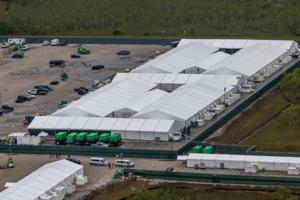
Federal judge wants more information about Alligator Alcatraz's legal authority
A federal judge in Miami said Monday he wants the DeSantis and Trump administrations to provide more information about the legal agreement governing the operations at Alligator Alcatraz as lawyers representing detainees question the very legality of the immigration detention site.
“We need to get to the bottom of the interplay between the ...Read more

Under pressure, UC admits a record number of Californians; racial diversity remains strong
The University of California system admitted its largest ever class of California undergraduates for fall 2025, while also maintaining a diverse student body and increasing the number of students who are the first generation in their family to attend college, according to preliminary data released Monday.
The University of California also ...Read more
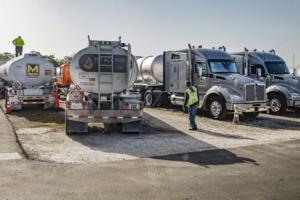
Who's in charge at Alligator Alcatraz? 'We've gotten a lot of runaround'
MIAMI — Immigration attorneys and environmental activists — even the Mexican government and the Archdiocese of Miami — have all asked who’s in charge at Alligator Alcatraz.
They say they can’t get a straight answer.
“We’ve gotten a lot of runaround,” Archbishop Thomas Wenski told the Miami Herald after trying unsuccessfully to ...Read more
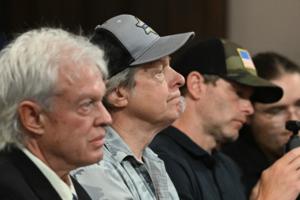
Feral swine or domestic pig? DNR's wild hog probe involved undercover hunt at Ted Nugent's farm
LANSING, Mich. — About a month before his fiery testimony against the state's Department of Natural Resources, conservative rocker Ted Nugent beat the agency in court on allegations that he was illegally hosting hunts of Russian boar.
Nugent's was one of six Michigan facilities in 2021 targeted by an undercover operation in which DNR officers...Read more
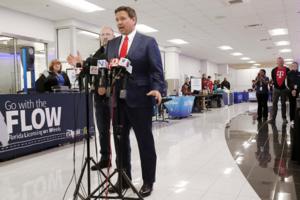
Company that rescued Floridians from strife-torn Haiti claims state hasn't paid
TALLAHASSEE, Fla. — A global rescue and disaster recovery company that helped evacuate Floridians from Haiti last year during a period of civil unrest has sued the state for $7.5 million, claiming Florida failed to pay the company for its role in the rescue efforts.
In a lawsuit filed in federal court in Tallahassee on Thursday, TAD Recovery ...Read more
2 children dead, 1 unresponsive after barge hits sailboat in Florida's Biscayne Bay
MIAMI — Two young children died at the hospital after a large barge hit a sailboat they were on near Hibiscus Island off Miami Beach on Monday morning, according to the U.S. Coast Guard.
A third child on the boat was taken to Ryder Trauma Center at Jackson Memorial Hospital and was unresponsive as of Monday afternoon, said Petty Officer 3rdh ...Read more

Walmart stabbing suspect arraigned in Traverse City district court
TRAVERSE CITY, Mich. — A Cheboygan man accused of randomly stabbing 11 people at a Walmart outside Traverse City over the weekend was arraigned Monday afternoon on multiple charges, but not before he told a magistrate he didn't want to be in the courtroom or talk to court officials.
Bradford Gille, 42, was arraigned on one count of terrorism ...Read more

Fatalities reported after shooting at casino in Reno; suspect in custody
Police in Reno, Nevada, detained a suspect Monday morning after a shooting reported by authorities at the city’s Grand Sierra Resort, according to local news outlets.
Early news reports said multiple people were injured in the shooting, although it remained unclear how many were hurt. The Reno Gazette-Journal, citing a city council member, ...Read more

NYC transit union threatens to sue GOP mayoral hopeful Curtis Sliwa over 'defamatory' comments
NEW YORK — The politically influential Transport Workers Union is threatening to sue Republican mayoral candidate Curtis Sliwa over “defamatory and false” comments he recently made about the labor group.
In a letter sent to Sliwa on Monday, John Samuelsen, the TWU’s international president, wrote that the mayoral hopeful engaged in the ...Read more

Shuttle Discovery's Texas transfer launches cost concerns
WASHINGTON — The Smithsonian Institution is resisting an effort from Texas lawmakers to transport the space shuttle Discovery from a Virginia museum to Houston, home of Mission Control, in a battle framed by the cost.
Texas GOP Sens. John Cornyn and Ted Cruz included in the reconciliation law a provision that would authorize the relocation of...Read more

Judge shields all Planned Parenthood clinics from defunding
WASHINGTON — A federal judge on Monday issued a preliminary injunction blocking language in the GOP budget reconciliation law that made Planned Parenthood ineligible for Medicaid reimbursements for one year.
U.S. District Judge Indira Talwani had granted a preliminary injunction last week blocking the provision for only some Planned ...Read more

Republicans brush aside Trump plan to slash NIH funding
WASHINGTON — House Republican appropriators plan to disregard the White House’s proposed 40% cut to the National Institutes of Health budget for fiscal 2026, according to multiple sources with knowledge of the situation.
Instead, the funding levels being discussed are similar to what’s currently appropriated, they said.
Republicans in ...Read more

Trump: I never had 'privilege' of visiting Jeffrey Epstein's island
President Donald Trump on Monday said he never had the “privilege” of visiting Jeffrey Epstein’s private island as he shed new details on his split from the notorious pedophile who was once his close friend and neighbor in Palm Beach, Florida.
Brushing off questions about Epstein, Trump again suggested the firestorm over Epstein was ...Read more

Trump shortens deadline for Putin to talk peace with Ukraine
President Donald Trump on Monday shortened to less than two weeks his deadline for Russia’s Vladimir Putin to talk peace with Ukraine.
After previously giving the Kremlin strongman 50 days, Trump said he has lost patience with Putin’s refusal to come to the table to end the three-year invasion of its smaller neighbor.
“I’m going to ...Read more

Trump to Senate: Confirm more nominees before August recess
WASHINGTON — With the House away, nominations and appropriations remain at the forefront of the Senate’s agenda for what is scheduled to be the final week before August recess.
Advancing President Donald Trump’s nominations is straightforward but laborious, with Democrats showing little willingness to expedite the process. That has led ...Read more

Walmart still closed after mass stabbings in Traverse City; patient conditions improve
GARFIELD TOWNSHIP, Mich. — A Walmart store where 11 people were stabbed Saturday in what appeared to be random attack by a Cheboygan man remained closed Monday, though community members were rallying together to support one another.
Linda Peters was walking her two small dogs in front of the closed Walmart on Monday morning when a UPS truck ...Read more
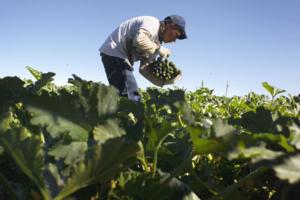
Some Republicans push more visas despite hard line on immigration
WASHINGTON — Even as the Trump administration pursues a hard-line approach to enforcing immigration law, some congressional Republicans acknowledge the need to expand immigration opportunities for workers in specialized sectors such as agriculture.
As industries that depend on temporary workers like agriculture and tourism say they need ...Read more

Walmart stabbing suspect charged with mutilating dead bodies years ago, court records show
DETROIT — A northern Michigan man accused of stabbing 11 people Saturday at a Walmart near Traverse City was previously accused of digging up a grave in a Petoskey cemetery and trying to remove the casket, court records show.
The criminal case against Bradford Gille offers a fuller picture of the mental health issues ― including a history ...Read more

Wallis Annenberg, visionary philanthropist who helped transform LA, dies at 85
LOS ANGELES -- Her name is ubiquitous in public spaces around Los Angeles: the Wallis Annenberg Building at the California Science Center in Exposition Park, the Wallis Annenberg Center for the Performing Arts in Beverly Hills, the soon-to-debut Wallis Annenberg Wildlife Crossing in Agoura Hills.
Then there’s the Annenberg Community Beach ...Read more
Trump proposes Gaza 'food centers,' says starvation is real
President Donald Trump said the U.S. would work on a new effort to provide food aid to alleviate starvation in Gaza along with other governments and organizations, including the UK and European Union.
Trump laid out his proposal during a Monday meeting with British Prime Minister Keir Starmer at his golf club in Turnberry, Scotland, though he ...Read more
Popular Stories
- Former Moscow police chief reflects on Kohberger and Idaho student murder case
- Serious liver disease is up among heavy drinkers, even without more drinking
- 'The pain is just beginning': Atlanta rallygoers blast federal budget cuts
- As DeSantis calls for property tax cuts, 11 Central Florida governments propose hikes
- EU, US reach deal to avoid Trump tariff hike before deadline





